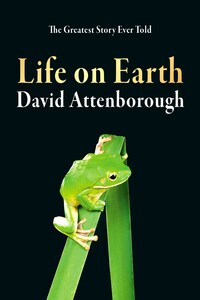COPYRIGHT
William Collins
An imprint of HarperCollinsPublishers 1 London Bridge Street London SE1 9GF
WilliamCollinsBooks.com
First published by William Collins Sons & Co. Ltd. and BBC Books:
a division of BBC Enterprises Ltd. in 1979
This eBook edition published by William Collins in 2018
Text © David Attenborough Productions Ltd. 1979, 2018
Photographs © individual copyright holders
The author asserts his moral right to be identified as the author of this work.
Cover Design: Heike Schüssler
Front Cover Photograph © Visuals Unlimited, Inc / Joe McDonald / Getty Images
A catalogue record for this book is available from the British Library.
All rights reserved under International and Pan-American Copyright Conventions. By payment of the required fees, you have been granted the non-exclusive, non-transferable right to access and read the text of this eBook on-screen. No part of this text may be reproduced, transmitted, downloaded, decompiled, reverse engineered, or stored in or introduced into any information storage and retrieval system, in any form or by any means, whether electronic or mechanical, now known or hereinafter invented, without the express written permission of HarperCollins Publishers.
Source ISBN: 9780008294281
Ebook Edition © October 2018 ISBN: 9780008294298
Version: 2018-08-09
PROLOGUE
I still recall, with great clarity, the very first time I went to the tropics. Stepping out of the plane and into the muggy, perfumed air of West Africa was like walking into a steam laundry. Moisture hung in the atmosphere so heavily that my skin and shirt were soaked within minutes. A hedge of hibiscus bordered the airport buildings. Sunbirds, glittering with green and blue iridescence, played around it, darting from one scarlet blossom to another, hanging on beating wings as they probed for nectar. Only after I had watched them for some time did I notice, clasping a branch within the hedge, a chameleon, motionless except for its goggling eyes, which swivelled to follow every passing insect. Beside the hedge, I trod on what appeared to be grass. To my astonishment, the leaflets immediately folded themselves flat against the stem, transforming green fronds into apparently bare twigs. It was sensitive mimosa. Beyond lay a ditch covered with floating plants. In the spaces between them, the black water rippled with fish, and over the leaves walked a chestnut-coloured bird, lifting its long-toed feet with the exaggerated care of a man in snowshoes. Wherever I looked, I found a prodigality of pattern and colour for which I was quite unprepared. It was a revelation of the splendour and fecundity of the natural world from which I have never recovered.
Since then, I have managed, one way or another, to get back to the tropics many times. Usually my purpose has been to make a film about some corner of that infinitely varied world. So I have had the luck to find and film rare creatures that few outsiders have seen in the wild, and to gaze on some of the most marvellous spectacles that the wild places of the world have to offer – a tree full of displaying birds of paradise in New Guinea, giant lemurs leaping through the forest of Madagascar, the biggest lizards in the world prowling, like dragons, through the jungle of a tiny island in Indonesia.
Initially, the films we made tried to document the lives of particular animals showing how each found its food, defended itself and courted, and the ways in which it fitted into the community of animals and plants around it. But then the idea formed in my mind that a group of us might make a series of films that portrayed animals in a slightly different way. Our subject would be not only natural history in the sense that those two words are normally used, but the history of nature. We would try to survey the whole animal kingdom and consider each great group of animals in the light of the part it has played in the long drama of life from its beginnings until today. This book originated from the three years of travelling and research that went into the making of those films.
The condensation of three thousand million years of history into three hundred or so pages, and the description of a group of animals containing tens of thousands of species within one chapter, compels vast omissions. My method was to try to perceive the single most significant thread in the history of a group and then concentrate on tracing that, resolutely ignoring other issues, no matter how enticing they may seem.
This, however, risks imposing an appearance of purpose on the animal kingdom that does not exist in reality. Darwin demonstrated that the driving force of evolution comes from the accumulation, over countless generations, of chance genetic changes sifted by the rigours of natural selection. In describing the consequences of this process it is only too easy to use a form of words that suggests that the animals themselves were striving to bring about change in a purposeful way – that fish








